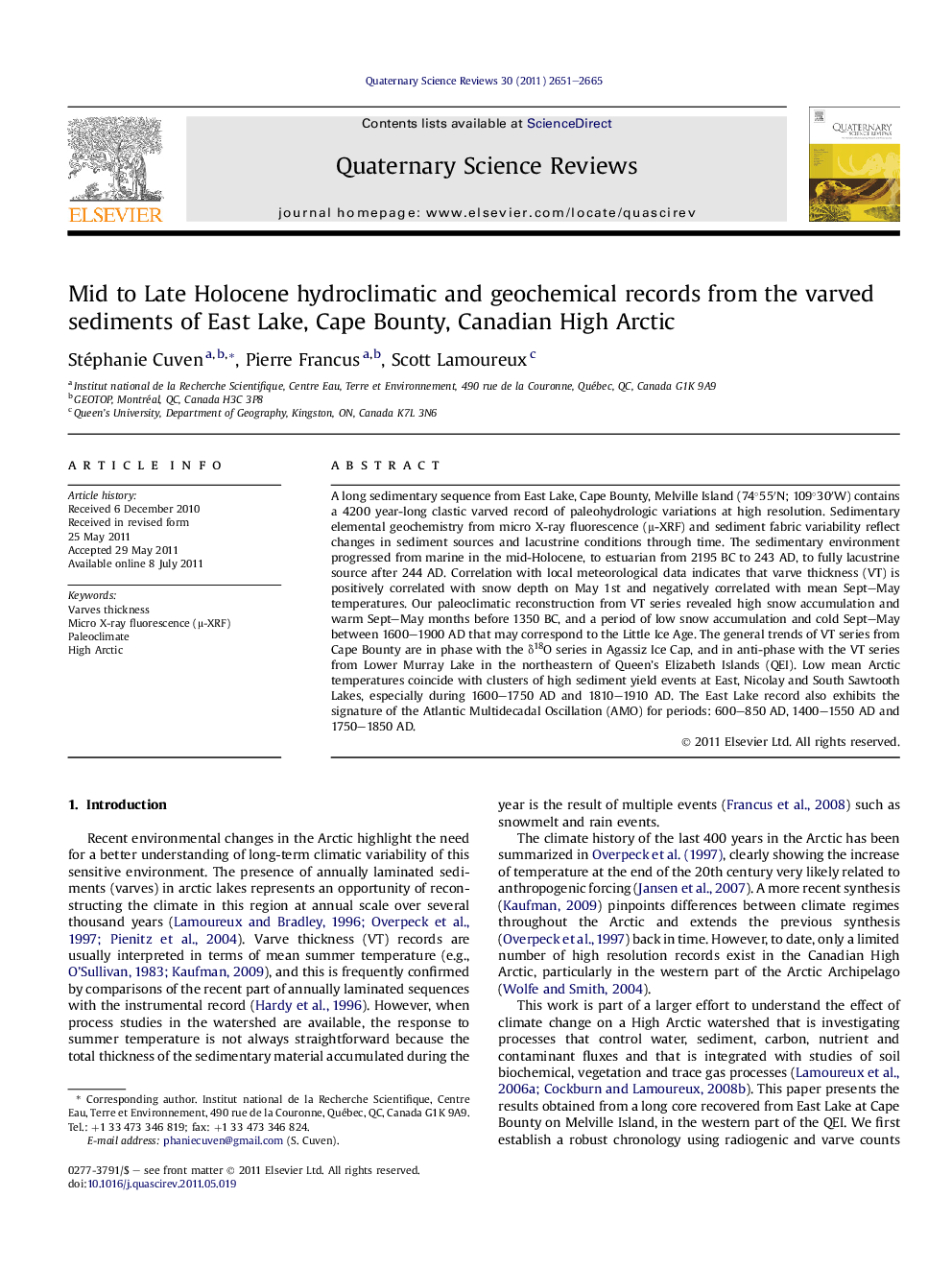| کد مقاله | کد نشریه | سال انتشار | مقاله انگلیسی | نسخه تمام متن |
|---|---|---|---|---|
| 4736720 | 1640908 | 2011 | 15 صفحه PDF | دانلود رایگان |

A long sedimentary sequence from East Lake, Cape Bounty, Melville Island (74°55′N; 109°30′W) contains a 4200 year-long clastic varved record of paleohydrologic variations at high resolution. Sedimentary elemental geochemistry from micro X-ray fluorescence (μ-XRF) and sediment fabric variability reflect changes in sediment sources and lacustrine conditions through time. The sedimentary environment progressed from marine in the mid-Holocene, to estuarian from 2195 BC to 243 AD, to fully lacustrine source after 244 AD. Correlation with local meteorological data indicates that varve thickness (VT) is positively correlated with snow depth on May 1st and negatively correlated with mean Sept–May temperatures. Our paleoclimatic reconstruction from VT series revealed high snow accumulation and warm Sept–May months before 1350 BC, and a period of low snow accumulation and cold Sept–May between 1600–1900 AD that may correspond to the Little Ice Age. The general trends of VT series from Cape Bounty are in phase with the δ18O series in Agassiz Ice Cap, and in anti-phase with the VT series from Lower Murray Lake in the northeastern of Queen’s Elizabeth Islands (QEI). Low mean Arctic temperatures coincide with clusters of high sediment yield events at East, Nicolay and South Sawtooth Lakes, especially during 1600–1750 AD and 1810–1910 AD. The East Lake record also exhibits the signature of the Atlantic Multidecadal Oscillation (AMO) for periods: 600–850 AD, 1400–1550 AD and 1750–1850 AD.
► Paleohydrologic variability in a 4200 year-long arctic varved record at Cape Bounty.
► Sedimentary source changes from marine until 2195 BC to lacustrine after 244 AD.
► Snow depth and/or cold winter temperatures imply thicker varves. LIA: 1600–1900 AD.
► Thicker varves and low mean Arctic temperatures: 1600–1750 AD and 1810–1910 AD.
► AMO signature at Cape Bounty: 600–850 AD, 1400–1550 AD and 1750–1850 AD.
Journal: Quaternary Science Reviews - Volume 30, Issues 19–20, September 2011, Pages 2651–2665